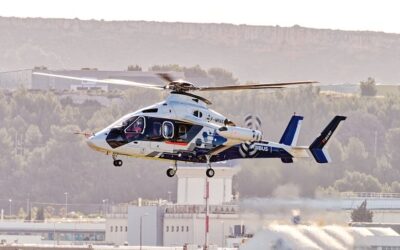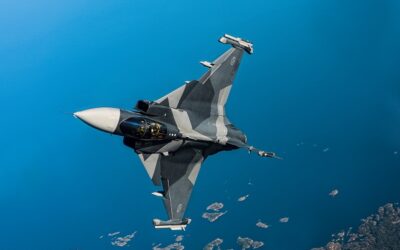Large-scale modernisation & military build-up unlikely, but…
Large-scale modernisation and a military build-up are unlikely, however. An attitude of society towards its military will not change rapidly; it is rather a slow process. It must also be remembered that Abe’s military policy is not always welcomed by members of the Japan Self-Defence Forces (JSDF) [which are, by the way, not officially called soldiers]. Many of them decided to join the JSDF because it offered a simple, secure job, but now there is a risk of being deployed to a conflict zone. Of course, the attitude towards Abe’s decisions is also related to political beliefs: Right-wingers are happy with them, but, among the majority of Japanese, pacifism is still very strong.
According to a 2014 poll, roughly 66.8% of those polled were against Abe’s new policy.
In order to support amphibious operations, Japan has started an upgrade programme of the OSUMI-class LSTs, meaning that they will be able to transport AAV-7s and V-22B Block Cs. The final unit will be upgraded by early 2020. Meanwhile, the Ground Self-Defence Force (GSDF) is replacing its UH-1H/Js with Bell 412EPIs through cooperation between FHI and Bell Helicopters; the contract calls for 150 helicopters.
The Maritime Self-Defence Force (MSDF) will procure additional AEGIS destroyers (DDG), destroyers (DD), submarines, P-1 aircraft, and SH-60K helicopters. At the same time, it will upgrade its existing destroyers, submarines (including those of the new 3,000t class), P-3Cs and SH-60K/Js. The introduction of a new ‘compact-type hull’ destroyer, new AWACS aircraft and a fixed air-defence radar system (FPS-7, with additional deployments and added ballistic missile defence capabilities) have been announced and the current fleet of E-767 AWACS aircraft and three ground support stations will also be improved. Under the current budget, the MSDF has €4 million for capability improvements to the radars of the P-3C MPAs and €15 million for life extension of three P-3Cs, while €39 million is devoted to life extension of four SH-60K/J helicopters. One OP-3P has received an upgrade to its imagery intelligence for €5.82 million. Japan is also acquiring the RQ-4B GLOBAL HAWK UAVs.
In the 2016 financial year, €46 million was allocated to the life extension of ASAGARI-class (5), ABUKUMA-class (2), HATAKAZE-class (1), and KONGO-class (1) destroyers. As for DDGs, Japan now has six units (two ATAGO-class and four KONGOs) but will have eight by 2020 and will also acquire 246 SM-2 Block IIIB missiles for destroyers. Two new and improved ATAGO-class units, known as the 27DD-subclass, are expected to be commissioned in 2020 and 2021. Meanwhile, the ASAHI-class destroyer was launched in October 2016.
For the Air Self-Defence Force (ASDF), the most important project is the procurement of Lockheed Martin’s F-35A aircraft as a replacement for F-4EJs. Japan will receive 42 aircraft (28 over the next four years), although the first was handed over to the ASDF in December 2016. In total, 38 will be built under licence by MHI. At the same time, Japan will modernise its F-15s and improve the air-to-air capabilities and network functions of its F-2s. Those F-15s that cannot be upgraded will be replaced with, “more capable fighter aircraft.”
The ASDF will also receive Type-11 short-range surface-to-air missiles and will upgrade Raytheon’s PATRIOT system with PAC-3MSE missiles. It will also enhance its AEW capabilities, having selected the E-2D in 2014 and awarding a contract to Northrop Grumman for the second aircraft in August 2016. In order to strengthen rapid deployment capabilities, the JSDF will procure C-2 transport aircraft and Boeing CH-47JA helicopters. Meanwhile, in November 2015, the ASDF, which already possesses C-130H and KC-767 tankers, decided to procure KC-46A tankers.
In March 2018, the MSDF received its eighth SORYU-class submarine; four were built and delivered by MHI and four by KHI. Japan is also modernising its OYASHIO-class submarines in order to increase its total fleet to 22. In March 2017, the MSDF commissioned the second IZUMO-class helicopter destroyer, currently intended to mount SH-60K (ASW) and MCH-101 (MCM) helicopters, but capable of operating the V-22 in the future.
Japan has thus accomplished its goal of having a ‘quasi-aircraft carrier’ in each of four escort flotillas; two smaller HYUGA-class and two IZUMOs. The MSDF is also developing the AWAJI-class minesweepers, launched by JMUC, with hulls made of composite fibre-reinforced plastic. In total, three will join the service and replace the wooden-hulled YAEYAMA-class vessels. The first unit was received in March and the second is scheduled for delivery next year. These units could, in future, be deployed abroad, including in the Persian Gulf, according to Japanese media. The total planned number of combat aircraft for the MSDF will be 170. Regarding helicopters, Japan is looking to procure up to 80 ship-based multirole helicopters.
For the full version of this article, please see MILITARY TECHNOLOGY 6/2017, available at MAST Asia 2017 in Tokyo, Japan.
Dr. Robert Czulda
























